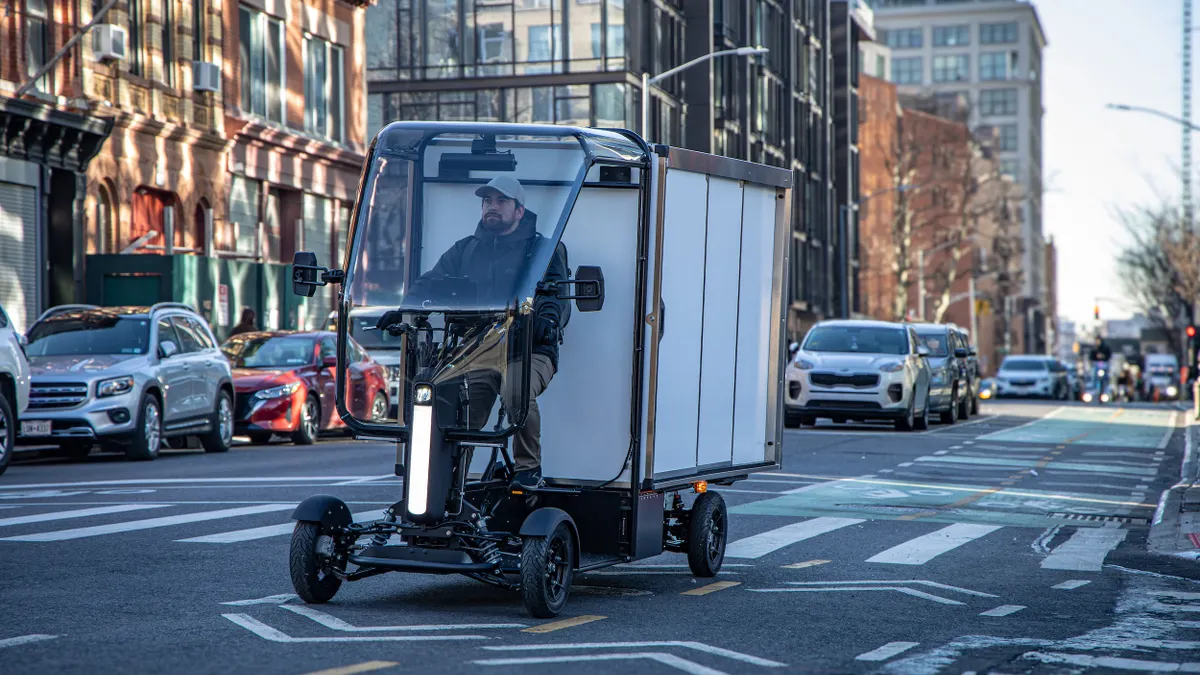Editor's note: This article was originally published in American City & County, which has merged with Smart Cities Dive to bring you expanded coverage of city innovation and local government. For the latest in smart city news, explore Smart Cities Dive or sign up for our newsletter.
How can cities and counties make their jurisdictions more sustainable? They need to re-direct their community’s expenditures, says Oliver Kroner, director of the Office of Environment and Sustainability for Cincinnati. “We have found success looking at where we are already spending money, and asking if that spend can be directed toward a climate solution. We spend millions on energy each year; can we direct that spend toward purchasing renewable energy? We spend millions each year on fleet vehicles; can we direct those dollars toward the purchase of zero-emissions vehicles? Cincinnati has found this approach helps drive climate progress and operational cost savings.”
Kroner says much of Cincinnati's success has come from partnerships on the ground. “We are increasing this focus and investing in community-led climate solutions through an initiative we call Seeds of Change.” His department leads the Green Cincinnati Plan (GCP) Seeds of Change Grant Program, which provides funding for community-initiated projects that align with the Green Cincinnati Plan's priorities. The grant program aims to support sustainable, equitable and resilient efforts that relieve burdens and increase benefits for those most affected by climate change in Cincinnati.
The GCP has eight focus areas: Buildings and Energy, City Operations, Community Activation, Food, Mobility, Natural Environment, Resilience and Climate Adaptation, and Zero Waste. The plan includes a wide-ranging set of 30 goals, 40 strategies and 130 actions to advance the sustainability, equity, and resilience in Cincinnati, which is often called the Queen City.
Kroner points to multiple successes through the initiative: “From micro-forests that soak up stormwater to solar panels on community centers, these projects elevate community voices and build a culture of sustainability across the city.”
He sees more collaborations on saving the planet and climate change in the future. “It is becoming increasingly clear that the public and private sectors will need to partner to achieve the scale of projects required to meet our climate goals. I see more public-private partnerships to help accelerate strategies like renewable energy development, electric vehicle charging and building efficiency.”
He also sees more communities across the U.S. recruiting staffers to develop eco-friendly initiatives that include environmental, social and economic solutions. “For a long time, only larger cities had sustainability officers. Now I see more and more small cities and counties hiring sustainability professionals and developing climate action plans. These issues are impacting quality of life and the economy, and local governments are stepping up.”
The Cincinnati official sees several paths for city leaders as they work toward a sustainable future. “I see local governments recognizing that many basic functions, like housing, zoning and transportation policies can help reduce carbon emissions and improve quality of life.”
Compact, tightly knit communities can be good for the planet, Kroner believes. “I see local governments recognizing that building urban density is a climate action. Changes in zoning policy can help encourage people to live closer to transit, to each other and to their places of work and play. Designing communities for density and proximity is one of the most impactful ways to reduce carbon emissions.”
OMNIA Partners, who sponsors this page, offers a robust portfolio of cooperative contracts in the public procurement space. The firm lists a number of cooperative contracts under the keyword “sustainability.”










